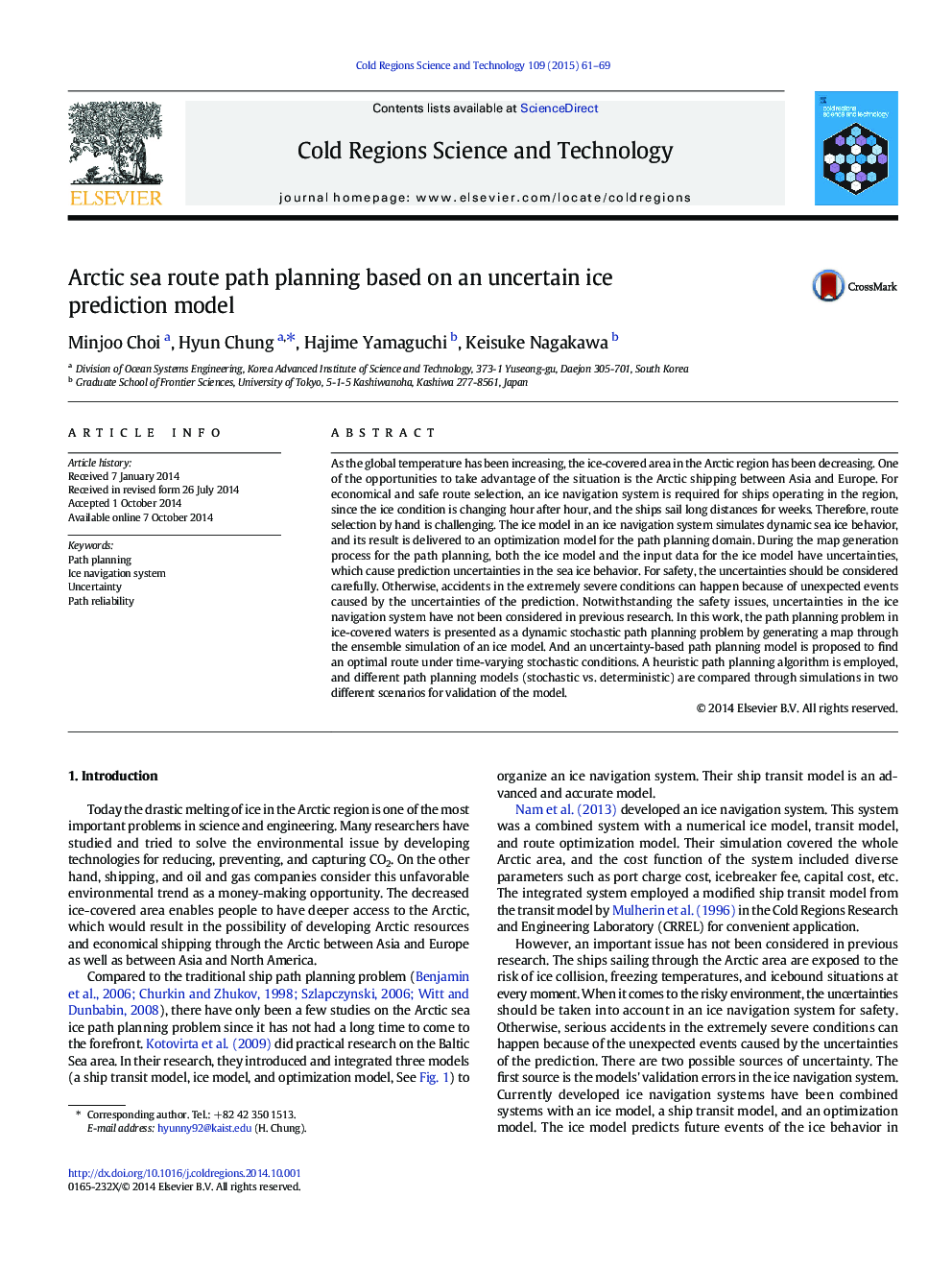| Article ID | Journal | Published Year | Pages | File Type |
|---|---|---|---|---|
| 6426913 | Cold Regions Science and Technology | 2015 | 9 Pages |
â¢Uncertain factors in an ice navigation system have the possibility to cause unexpected hazards in the Arctic region.â¢Input-uncertainty and model-uncertainty are uncertain factors in ice navigation system.â¢The input uncertainty of the ice model is handled by ensemble simulation.â¢We model a stochastic route-optimization model for the stochastic domain in ice thickness and concentration.â¢We simulate our system in two scenarios, Northern Sea Route (NSR) and Northwest Passage.
As the global temperature has been increasing, the ice-covered area in the Arctic region has been decreasing. One of the opportunities to take advantage of the situation is the Arctic shipping between Asia and Europe. For economical and safe route selection, an ice navigation system is required for ships operating in the region, since the ice condition is changing hour after hour, and the ships sail long distances for weeks. Therefore, route selection by hand is challenging. The ice model in an ice navigation system simulates dynamic sea ice behavior, and its result is delivered to an optimization model for the path planning domain. During the map generation process for the path planning, both the ice model and the input data for the ice model have uncertainties, which cause prediction uncertainties in the sea ice behavior. For safety, the uncertainties should be considered carefully. Otherwise, accidents in the extremely severe conditions can happen because of unexpected events caused by the uncertainties of the prediction. Notwithstanding the safety issues, uncertainties in the ice navigation system have not been considered in previous research. In this work, the path planning problem in ice-covered waters is presented as a dynamic stochastic path planning problem by generating a map through the ensemble simulation of an ice model. And an uncertainty-based path planning model is proposed to find an optimal route under time-varying stochastic conditions. A heuristic path planning algorithm is employed, and different path planning models (stochastic vs. deterministic) are compared through simulations in two different scenarios for validation of the model.
